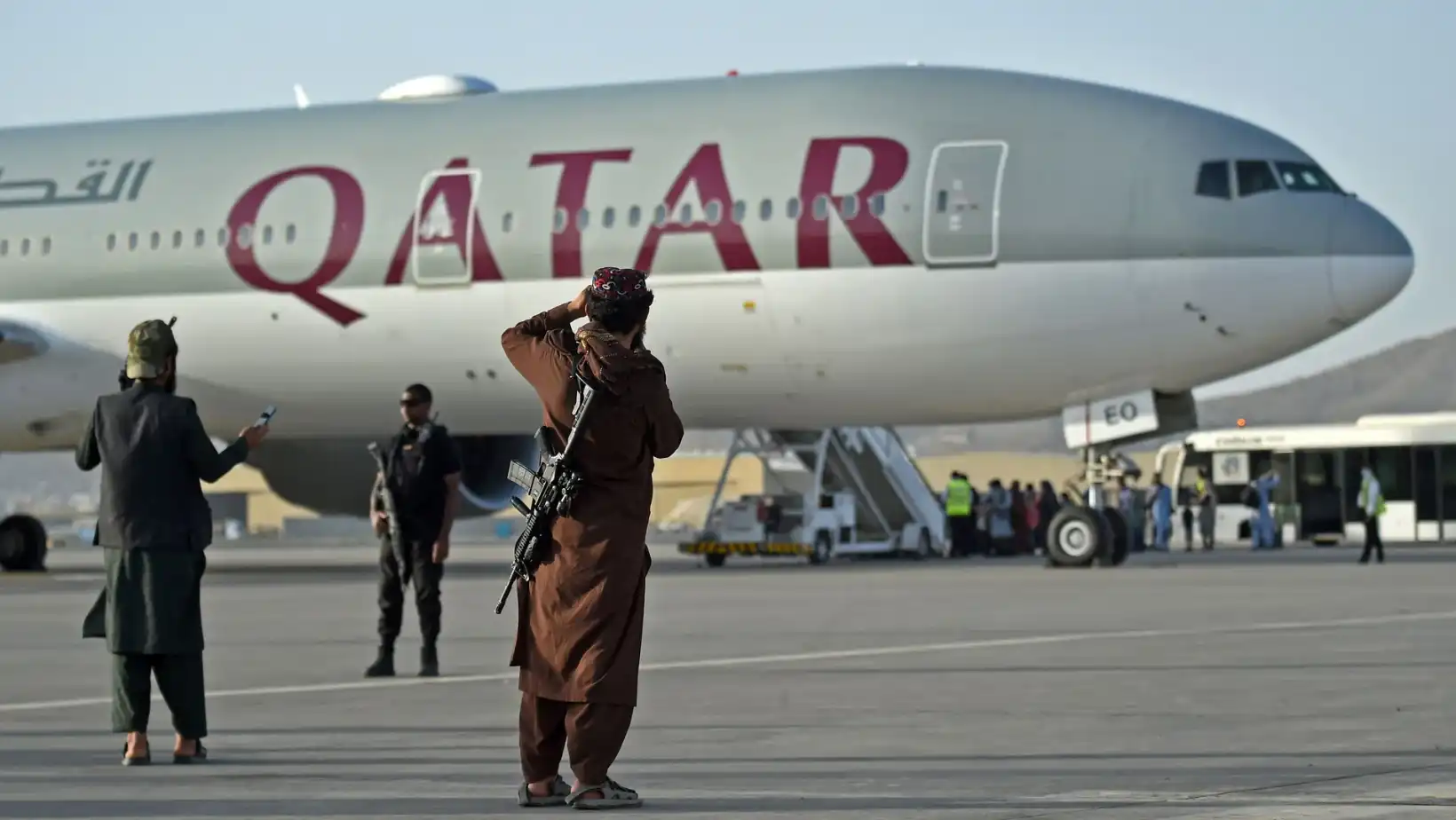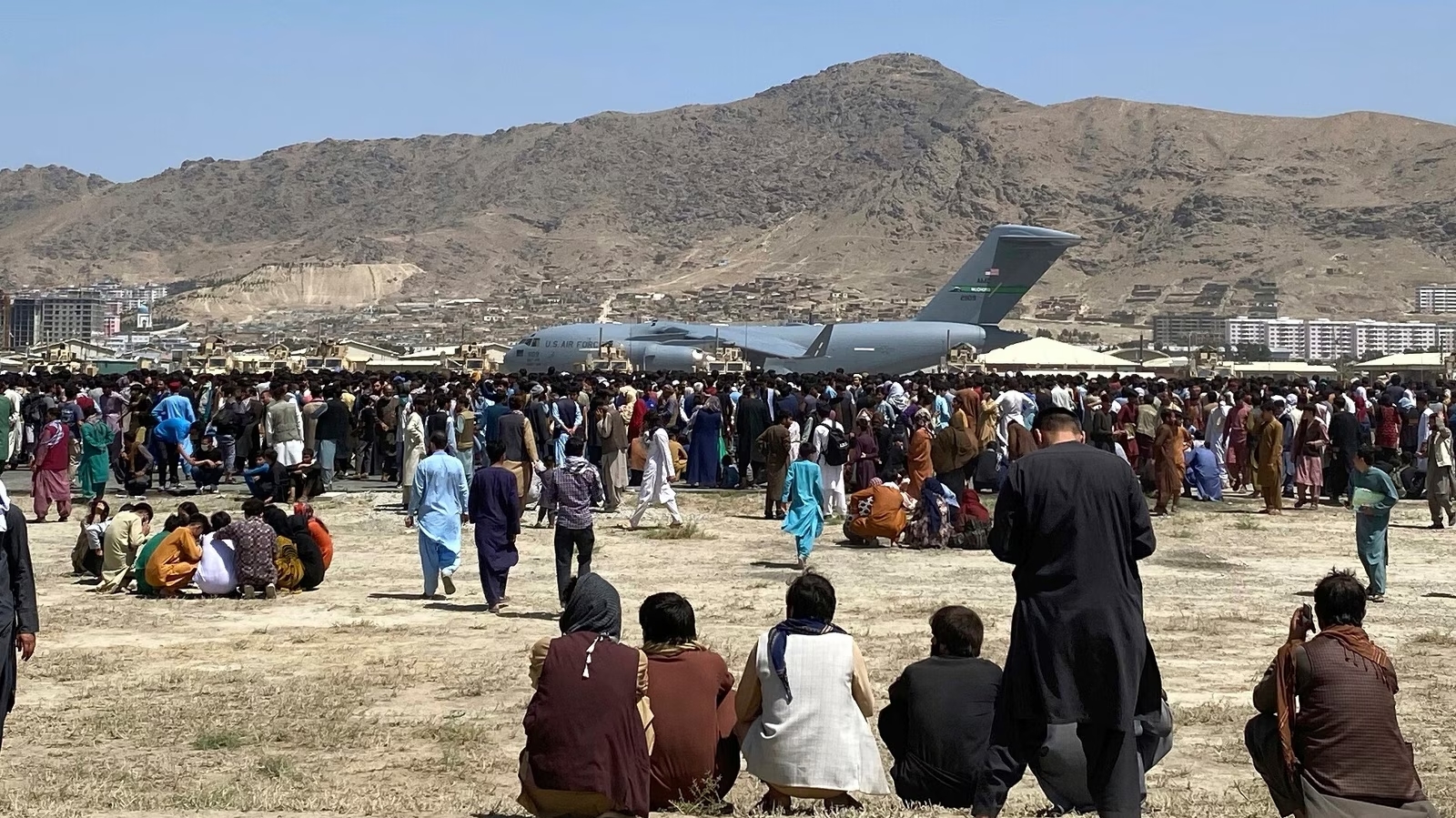Kabul airport: Afghanistan’s lifeline
Situated a mere five kilometers from the central hub of Kabul, Kabul airport plays as Afghanistan’s primary gateway to the world and stands as the foremost global conduit and the exclusive departure point for individuals seeking refuge following two decades of US longest war in history.
Among the 64 airports in Afghanistan, only four support international flights: Herat, Mazar-Sharif, Kabul, and Kandahar. The latter two airports, initially designated for civilian use, have transformed into military bases, besides Bagram and Shindand, with Kabul airport hosting an extensive military base capable of accommodating over 100 aircraft.
The airport has two distinct partitions: the civilian sector, typically facilitating commercial flights for Afghan civil airlines and others, and the military sector situated on the northern side and outfitted for military purposes, serving both the US and Afghan Air Forces and encompassing an air base, intelligence headquarters, and a pilot training center.
Important stops in the airport history
Established in the 1960s under the auspices of the Soviet Union when Afghanistan was a global tourist attraction, the airport underwent transformations over the years. Initially utilized by the Soviet army as a military base from 1979 to 1989 during the Soviet invasion of Afghanistan, the airport later came under the control of the Afghan army during President Mohammed Najibullah’s Russian-backed tenure.
In 1992, the airport fell into the hands of the Mujahideen, the Afghan parties that fought against the Soviet invasion. Four years later, control shifted to the Taliban after the capture of Kabul and taking the ruins of the government all over Afghanistan in 1996, and remained in the hands of the Taliban’s government until the US invasion in 2001. International air traffic, under the Taliban, suffered from disruptions being limited to occasional flights due to international sanctions.
In 2001, the US military bombed the airport, destroying its runway, structures, and all aircraft, then the NATO troops operated the airport until 2005.
The airport was renewed within the reconstruction efforts since 2011, supported by the US and Japan, and was renamed as Hamid Karzai International Airport in October 2014, in honor of former Afghanistan President Hamid Karzai.
Throughout its history, the airport witnessed various incidents, including plane crashes, rocket launches, and suicide attacks. Due to recurrent disturbances in Kabul, the Afghan Air Force, along with foreign military bodies, periodically assumed security at the airport. Nevertheless, the Afghan Civil Aviation Authority sought the transfer of flight supervision from the NATO mission in April 2021, but received no response.
Heightened discussions among Western diplomats emphasized the significance of securing the airport as a fundamental condition for sustaining embassies and diplomatic presence in Afghanistan. Former Afghan National Security Advisor Hamdullah Mohib disclosed that over 22 embassies linked their stay in Kabul to the fate of the airport, emphasizing its placement under the supervision of a NATO member state.
Washington emphasized that the security of the airport and the surrounding region is imperative for the survival of foreign countries’ diplomatic missions. The airport, consequently, stood as a sole connection between Afghanistan and the international community with the new Taliban government facing potential international and regional isolation if it fails to do so, memorizing the traumatic experience of its rule of Afghanistan in 1996.
What does the airport represent for Afghans?
Since 2001, Afghanistan’s economic sustenance relies heavily on international aid, donor conferences, and the Reconstruction Fund. Notably, the World Bank extended approximately five billion dollars in aid from 2002 until April 2021, primarily in the form of grants. Challenges persist for organizations like the WHO and UNICEF in delivering essential food and medical supplies to Kabul airport amid widespread evacuations.
Even before the Taliban assumed control of Kabul, Afghanistan ranked the third humanitarian concern globally, with over 18 million people in dire need of assistance, as reported by UNICEF. However, the current restriction on commercial planes landing in Kabul complicates the delivery of aid.
It is noteworthy that numerous international reports affirm the absence of public health facilities for most Afghans, widespread food shortages, high prices, and inadequate electricity for 80% of households. The average lifespan in the country is less than 50 years.
In early September 2021, a senior UN official cautioned that Afghanistan might face a food shortage crisis during that month, presenting an additional challenge to the Taliban, which is currently striving to establish stability after decades of war.
The UN Humanitarian Coordinator in Afghanistan, Ramiz Alakbarov, emphasized how crucial it is to meet the humanitarian needs of the people. Highlighting that over half of the children are uncertain about their next meal, Alakbarov pointed out USD 200 million are required to cover food requirements. Alakbarov noted that more than a third of the population (38 million people) lacks confidence in securing their food needs, and the UN aims to deliver food to 18 million people, but has only obtained half of the required funding.
UN Secretary-General Antonio Guterres further underscored the severity of the situation in a statement, indicating that nearly half of the Afghan population, totaling 18 million people, requires humanitarian aid to survive. He emphasized that one in three Afghans does not know where their next meal will come from, expressing concern that over half of children under the age of five will face hunger in the coming year.



